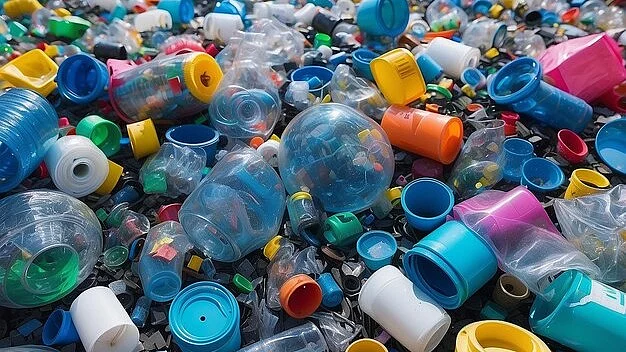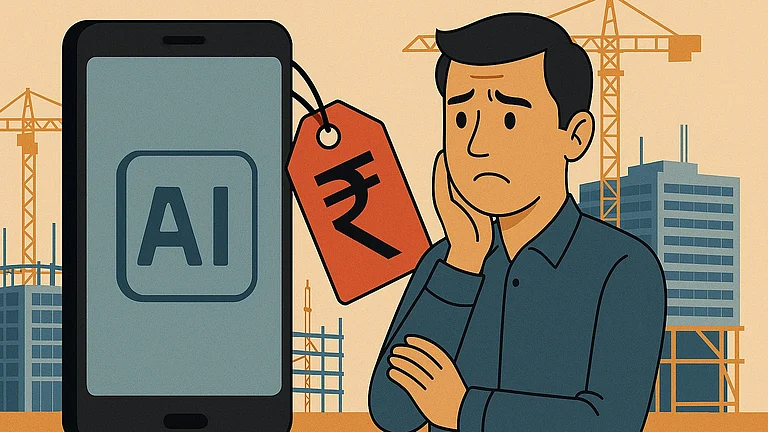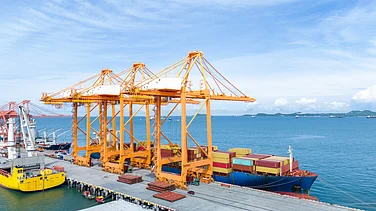When Coca-Cola quietly switched from virgin to recycled plastic for bottling its beverages in 2023, nothing changed. Not the fizz, not the flavour, not even the price. That’s because recycled plastic had become just as cheap as virgin: a significant tipping point in the global battle against emissions—one that slipped by almost unnoticed.
“Recycled plastics for most applications are quite competitive now,” says Ujjwal Desai, co-founder of Lucro Plastecycle. “They are either at par with virgin or marginally higher or lower. The premium for recycled plastics, if any, has been pared down to 5–10 per cent, largely due to technological interventions.”
So, what’s wrong? If recycled plastics have achieved price parity with virgin, why hasn't the packaging industry (at least) adopted it full-scale? It’s a confounding question, given the growing regulatory and market pressure on businesses to switch to greener packaging alternatives.
“India has fast-tracked policy through EPR, setting mandatory recycled content targets that companies must comply with,” says senior circular economy expert Dr Swati Singh Sambyal. “However, robust financing models and stronger compliance enforcement and monitoring are severely lacking.”
India’s recycled plastics market size was $4,245.9 million in 2024 and is expected to reach $6,524.3 million by 2033, growing at a CAGR of 4.64% between 2025 and 2033. Despite the promising trajectory, structural challenges continue to dog the sector, holding it back from realising its potential.
Plastics: A Crisis of Plenty
With the plastics crisis spinning out of control, clearly, there is no time to waste for addressing these challenges. Already, India generates nearly 26,000 tonnes of plastic waste daily, piling up to 3.3 million metric tonnes annually, enough to bury a city the size of Chandigarh in garbage.
More than being an eyesore, plastic pollution is among the most blamed and widely cited reasons for the looming climate crisis. “The scale of waste we generate is overwhelming natural systems and accelerating emissions in ways few fully appreciate,” says Sambyal.
Across the value chain—from sourcing and production to use and disposal—plastics pose a range of hard-to-abate environmental hazards, which together could undermine India's ambitious climate agenda. The United Nations Environment Programmme estimates that around 98 per cent of single-use plastic produced today is made of petrochemicals derived from oil and gas. The extraction and transport of those fossil fuels and the manufacture and disposal of plastics lead to carbon emissions that ultimately contribute to climate change.
According to experts, virgin plastic production, which could account for up to 20% of global oil consumption by 2050, will turn into mountains of toxic waste, clog landfills, and poison the environment for hundreds of years because plastics take forever to decompose.
This is among the many compelling reasons for industries to adopt (or, to be made to adopt) recycled plastic. Every year, vast colonies of marine life die or suffer grievous harm by either ingesting or getting entangled in the estimated 11 million tonnes of plastic waste that enter the oceans. The deadliest of their impacts, however, is in the form of microplastics, which infiltrate food chains, posing unknown risks to human health.
Despite growing awareness, only about 9% of plastic waste is recycled globally, a reality that highlights the urgent need for a systemic shift towards circular and sustainable practices. India is a relative outperformer, recycling 60% of its plastic waste, yet because of the sheer volume of waste it generates, millions of tonnes remain unmanaged.
So, the question remains: Why, despite price parity and other enabling factors, don’t recycled plastics have enough takers?
Roadblocks for Recycled
Inconsistent quality is a major dampener for sectors that are heavily reliant on packaging. Anjali Ravi Kumar, Chief Sustainability Officer at Eternal (formerly Zomato), explains: “In the Indian ecosystem, it’s important to be cautious about using recycled plastic in food applications. Such use is permitted only when there is sufficient evidence that the feedstock is contamination-free.”
However, “since feedstock quality in India tends to vary and is often compromised due to contamination or degradation during the recycling process, recycled plastics struggle to meet the required standards, which in turn discourages adoption,” says the Chief Quality Officer at a leading packaging company.
Then there are worries over market perception. Although there is a groundswell of customers ready to opt for eco-friendly alternatives, even at a premium, many businesses, especially in sensitive sectors like food, continue to drag their feet, unsure about the impact of the switch on their brand image. “As India remains an emerging and aspirational economy, the bulk of the demand continues to come from middle-income consumers, many of whom are unaware or disinterested in concerns like environmental harm. They are essentially need-driven and cost-conscious,” says Desai. “Creating awareness, particularly across such segments, is crucial to trigger a market pull for recycled plastics, “ he adds.
Finally, transition calls for significant re-engineering as recycled materials may have different mechanical properties or processing requirements. Doing this calls for substantial investment in research, development, and retooling, creating upfront costs and risks for manufacturers.
“Recycling offers an entry point for smaller businesses. However, without adequate investment, it is increasingly difficult for smaller players to scale and deliver consistent, high-quality recycled materials needed for industry acceptance and long-term viability,” says Desai.
Bridging the Gaps
For India to bridge the circularity gap, targeted actions are needed across multiple fronts. This will require a coordinated approach addressing regulation, technology, supply chains, and consumer behaviour to close the loop on waste.
Although India has tightened its regulatory grip around plastics, it is still worryingly elastic, hampering enforcement and leading to inefficiency and even graft. Going ahead, the country needs to strengthen policies that mandate recycled content in packaging, backed by clear standards and penalties for non-compliance. Such a move will create a strong market pull, which may help the recycled plastic industry scale and put behind legacy issues like reliability and inconsistent quality. Simplifying the certification processes for recycled plastics, especially food-grade materials, needs to be a priority.
Growing scale will enable the industry to invest in sophisticated sorting and processing facilities and innovations, such as chemical recycling, which breaks plastics back into their molecular components. Public-private partnerships can accelerate the development and deployment of these technologies, which minimise contamination and other quality issues associated with mechanical recycling.
Startups like Recykal and Kabadiwala are focusing on digitising waste collection and ensuring traceability. Recykal’s platform now supports over 100 brands, helping them track compliance and build auditable recycling chains. “With our intent to upgrade infrastructure, we have installed balers approximately every 300 kilometres across our footprint and are now expanding this coverage,” says Pankaj Singh, General Manager, Plastics at Recykal. “We have also installed efficient in-house sorting machines, which we plan to commercialise soon. Our ongoing efforts in recycling are enhancing both the sustainability and efficiency of our value chain.”
Similarly, to improve collection rates and feedstock, the essential determinants of quality, millions of rag-pickers, the foot-soldiers of India's waste management system, need to be trained, tooled and integrated into its organised supply chains with fair wages. Aligned to the digitisation of collection and tracking systems, which enhance transparency and efficiency, these steps can transform the paradigm of recycled plastics in the country.
On another track, though consumers in India are becoming more environmentally conscious, much more needs to be done to rally their support for recycled alternatives.
“In today’s digital world, it’s not just consumer perception that matters, but actual benefits. The younger, tech-savvy Indian consumer demands authenticity and drives change — they look for environmentally conscious products and hold brands accountable. Therefore, awareness campaigns, eco-labelling, and collaboration with retailers are crucial to building trust and demand for recycled content,” says Lucro’s Desai.
Recycled Plastic: The Future
Ultimately, the future of plastic recycling will depend on the quality and scalability of circular business models; the government can help here by encouraging industry consortia to pool resources for research and pilot projects, even as it promotes the production and adoption of recycled plastics with subsidies, tax benefits, green procurement policies and punitive regulations. Packaging design needs to adapt and prioritise recyclability and the use of recycled materials.
By innovating collection, recycling, and reuse systems—like deposit-return programs or refillable packaging—India can kill plastic waste right at its source. Finally, strengthening Extended Producer Responsibility (EPR) schemes is essential to ensure that producers take responsibility for managing plastic waste at its end-of-life.
Though recycled plastics have won the price battle, the war for their widespread adoption has just begun. It is a war that cannot be won without stronger policies, quality assurance, reliable supply chains and public trust.































